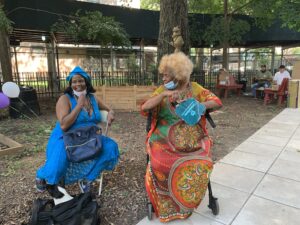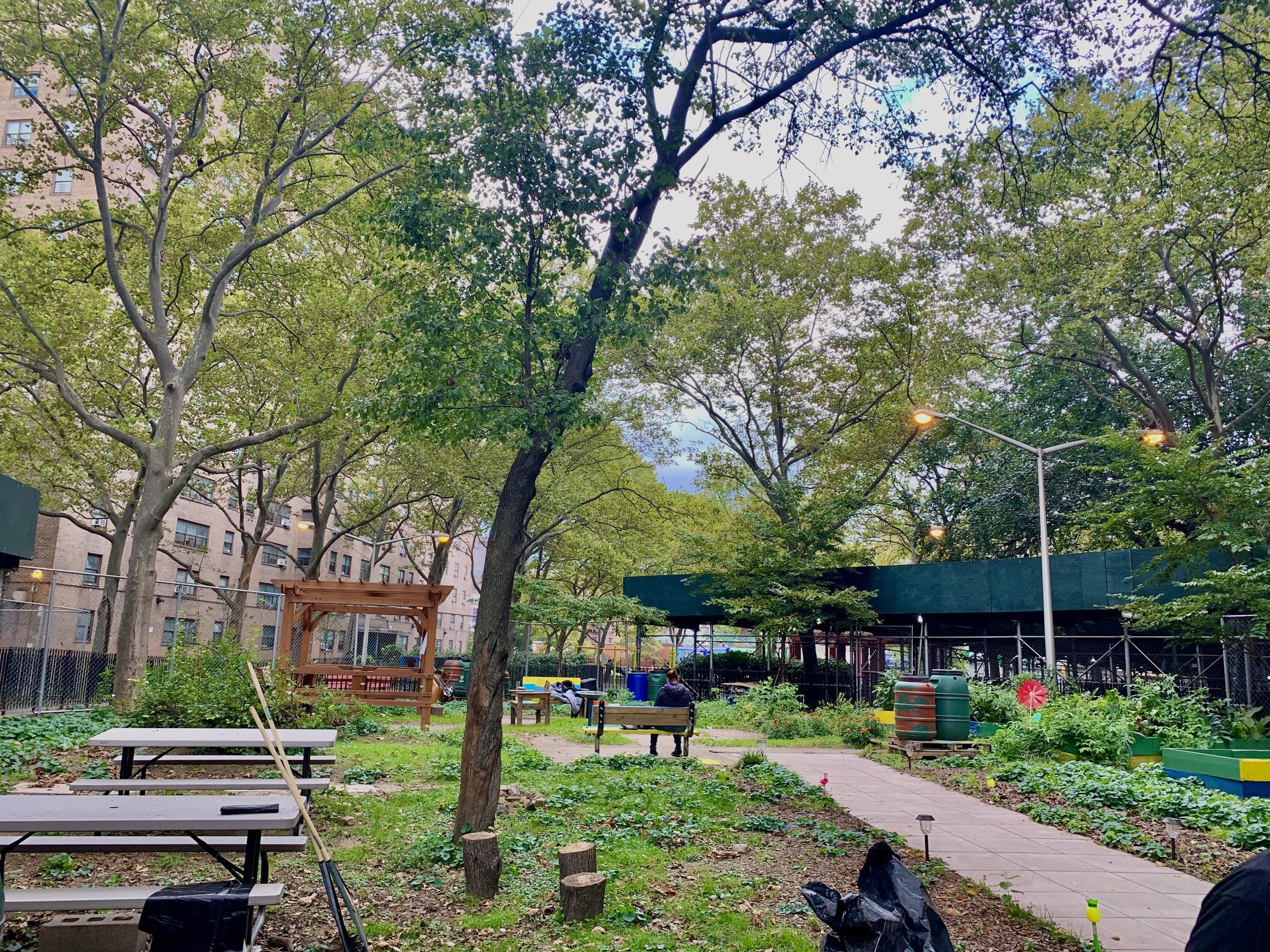Founders of NYCHA community garden look to overcome initial administrative hurdles
Cesar Yoc wanders through lush greenery over to a row of raised beds within the Mill Brook Houses’ community garden. He dips his hand into a bush and pulls out three green spherical plants: They’re baby tomatoes, he says, admitting with a laugh that they’d be bigger if they’d been planted correctly.
“They’re tiny,” the urban planner says. “We put them in a little bit late, too.”
Yoc, founder of the Bronx Institute for Urban Systems and resident of Mill Brook Houses on East 137th Street in Port Morris, isn’t shy to admit that building a community garden from the ground up has come with a learning curve. But he’s proud of how far it’s progressed: Less than three years ago, the 6,000-square-foot lot was empty, overgrown with weeds, dotted with litter and visibly ignored.
So, in 2017, Yoc set his sights on putting the area to good use. He lobbied NYCHA, raised funds online, gathered a team of eager gardeners (who call themselves the ‘Guardians of the Garden’) and got to work. Today, the Mill Brook garden is rife with greenery, its harvest bountiful, save the occasional undersized tomato. Healthy basil and kale plants grow in brightly painted wooden boxes. Residents occasionally stop by to pick peppers for their dinners.
But despite this progress, Yoc says funding and administrative barriers are keeping the garden from reaching its potential. The garden is nearing the end of the approximately $16,000 it crowdfunded to start up with in 2018, and is now fundraising again to achieve its current goals: installing flower beds, hiring a garden manager to regularly tend to the greenery and building out educational programming for residents.
Yoc also believes that NYCHA fencing installed around the garden’s perimeter is curbing its reach and impact within the complex. Put in place to protect residents amid building repairs, the fencing blocks all but one entry point into the garden, limiting the number of residents that Yoc and the guardians can let in to six without violating fire safety codes.
The fences won’t be removed until next year, Yoc predicts. NYCHA media relations director Nekoro Gomes said the fencing does not restrict residents’ access.

Achieving their fundraising goals and removing the fencing barriers would bring the guardians to open the garden’s doors to the Mill Brook community fully and for good. Jessica Matos, dedicated gardener, muralist and Mill Brook resident hopes to host educational workshops on art and urban farming in the space by next summer. Pointing to evidence that gardening is psychologically beneficial, Matos says she’s found personal solace spending time there in recent months. She hopes to extend the same opportunity to her neighbors.
“When people garden, they say they relax, they feel at ease,” Matos says. “Same thing with art: It’s therapeutic.”
And Yoc hopes that turning the garden into an educational tool will help encourage his neighbors to take up environmental causes. He notes that he often feels alone as a person of color in predominantly white urban planning spaces – and he wants to see this change, starting with his community.
“In planning fields, there’s not a lot of us there, and [urban planners] make decisions about what happens to our neighborhoods,” he says. “We need to have more people be aware of these fields and go for those fields.”

